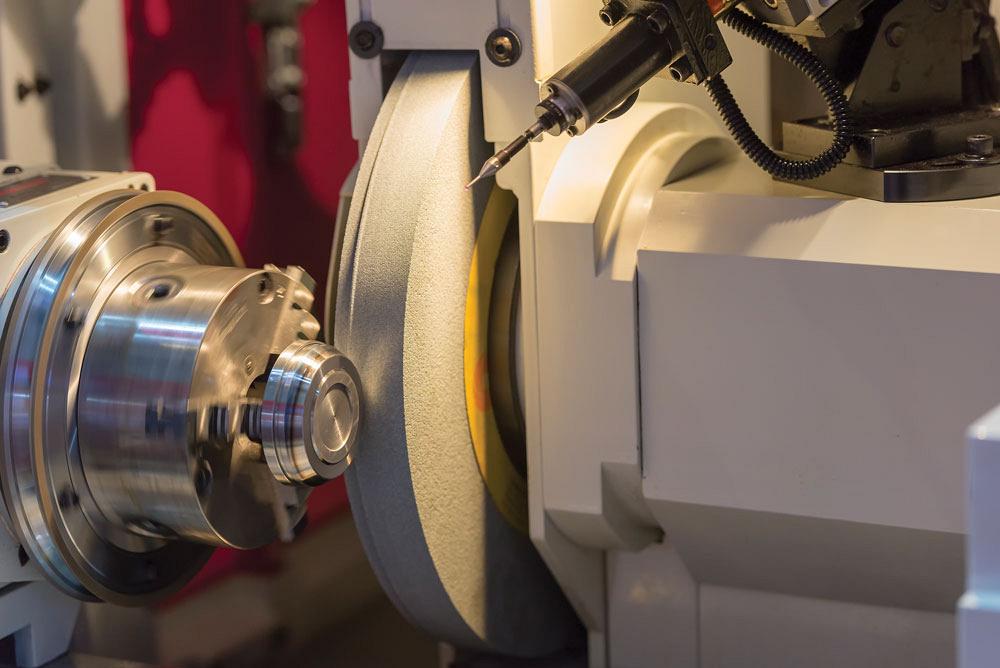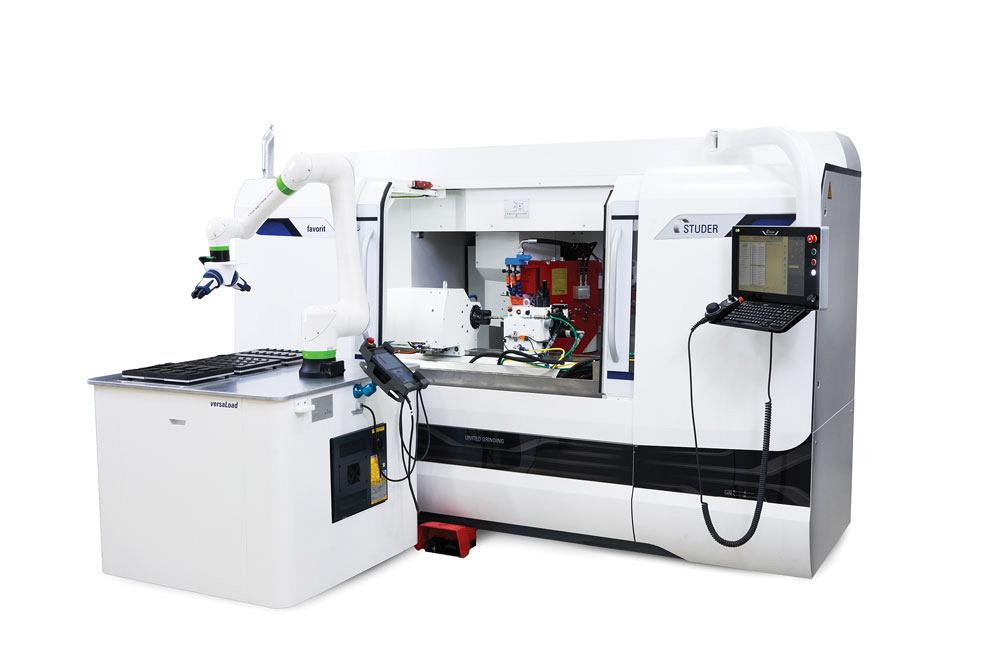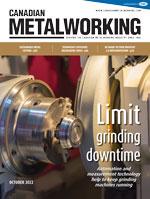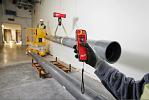Associate Editor
- FMA
- The Fabricator
- FABTECH
- Canadian Metalworking
Limit grinding downtime
Automation and measurement technology help to keep grinding machines running
- By Lindsay Luminoso
- November 10, 2022
- Article
- Metalworking
Grinding machine downtime comes in various forms. One of the biggest productivity drains is machine downtime due to maintenance. This often is unexpected and can lead to even greater production issues if not fixed quickly. Serious machine issues can be both costly and time consuming.
Standard preventive maintenance can help combat this. It’s also important to be aware of the machine’s performance and have an operator pay attention to various aspects of the process to ensure it’s running smoothly. Being consistently diligent about machine upkeep will lead to less downtime due to machine failure.
"Inherent in grinding, the most common downtime comes in the form of changeovers," said Joseph Denny, engineering manager, Glebar Co./Tridex, an MMT-Inc. company, Ramsey, N.J. "Whenever a shop is changing over in between jobs, many factors need to come into play. With centreless grinding, an operator may have to take off both the grinding and regulating wheel, change any dressing templates, change the blade, load all the new tooling, and dress the wheel."
Manufacturing engineers or shop managers can conduct time studies of operator setup times to get a better sense of the process and find areas for improvement.
"Not only that, but shops need to look at their efficiency, scrap rate, and cycle times to know if their grinding process could be improved," said Andrew Osborn, national sales manager, cylindrical division, United Grinding, Miamisburg, Ohio. "Each of the options above can assist in improving the efficiency of the shop’s grinding areas through different techniques."
Leveraging Skill and Expertise
When it comes to changeovers, operator skill will play a huge part in how quickly and efficiently the grinding machine can be set up for the next part.
Typically, this involves an operator touching off the part, from the blade to the wheel then the part to the wheel. There can be several touch offs—making this an iterative process—until the operator can get the part on size to start producing components.
"Finding skilled technicians is an ongoing challenge for many of our customers," said Denny. "Historically, grinding requires a lot of skill and often tribal knowledge. Finding a way to capture that experience and transfer it to new workers is essential. Creating intuitive interfaces and integrating automation is one way we can help solve this challenge."
Another way for shops to take advantage of knowledge and expertise is by partnering with grinding machine manufacturers and distributors. These manufacturers are a good first stop for any questions or concerns that may arise. They also are a good resource to update shops on the latest features and technology.
"Most shops don’t have time to look into productivity gains on their existing equipment," said Osborn. "They rely on the experts at companies like United Grinding. It is our job to show [shops] how these technologies can improve their grinding processes. They can also visit United Grinding to perform test grinds and trials to prove the productivity gains before purchasing a machine. This is a huge advantage."
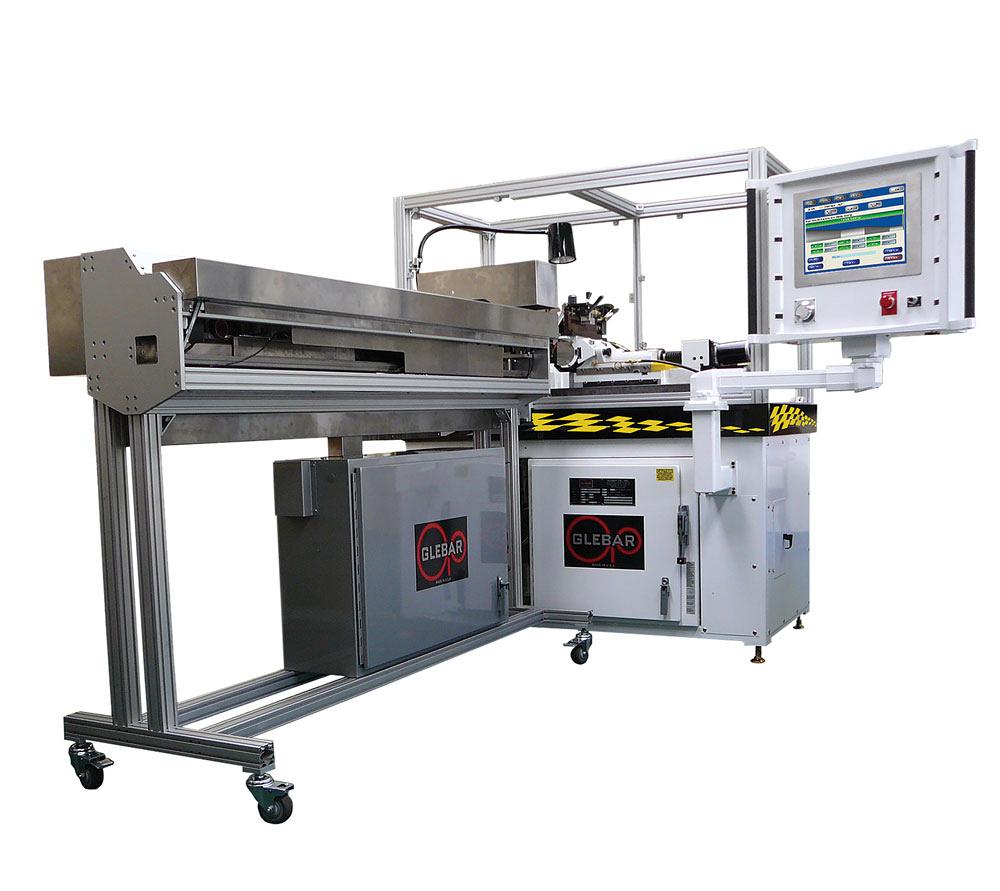
Traditionally, sensors or sensing systems must be physically moved by the operator or technician to change the profile or wire length. The GT-9AC accomplishes all of this automatically with a few taps of the touchscreen, significantly reducing setup time. Glebar
When Automation Makes Sense
Automation, whether it’s a robotic cell or part loader, can be added to a grinding machine to help increase cell productivity. There are many options available, so it may be difficult to know what the best option is.
"Shops that produce high-volume, low-mix parts, [which] often are taking on runs of a million of the same part, typically invest in automation from the onset, like a robotic cell, to optimize the operation," said Denny. "That robotic cell will feed the machine and do an automatic size compensation using automated measuring and feedback."
A shop that is focused on a single product line will save a lot of time by adding automated part loading, part checking, and feedback to the machine to bring it back on size. Some automated systems, when they can’t bring it back on size, will stop the machine and send a message to the operator that the machine may require intervention.
"If a shop has invested in a robotic cell, they probably are going to also invest in the latest technology for even the smallest improvements," said Denny. "At the end of the day, the robotic cell is only going to be capable of replicating the best operator. In the end, there still needs to be someone there turning the knobs and pressing the buttons. There are many formulas and variables that an operator needs to make assumptions about and having technology that can help with that will make the process better."
Choosing the right automation and ancillary technology will depend on the process and the parts being ground. However, regardless of whether it’s a cylindrical, profile, or tool grinder, there are so many options available.
For example, Larry Marchand, vice-president of sales, profile and surface division at United Grinding, noted that for profile grinding, an index table feature allows for simultaneous loading and grinding, essentially providing free part loading time, and can be combined with an overhead dresser for continuous or in-process dressing with no delay to the process.
Automation is not just for shops producing millions of one part. Job shops can take advantage of entry-level automation like United Grinding’s versaLoad, which uses a FANUC CRX-series collaborative robot. Portable automation like this can be moved around on the shop floor to adjust to production needs.
Oftentimes, productivity-enhancing technologies can be combined with the latest automation for better results.
"Adding automation to a machine is a great way to improve productivity and allow the machine to run unattended," said Osborn. "If we combine this with the synchronous tailstock and the laser control, we now can grind the entire part in a single clamping without manually adding driver tooling to the parts. We also can measure the parts during the process to ensure the correct tolerances are being achieved without any manual intervention."
Understanding the Process and Data Capture
Some of the more advanced grinding machines now are equipped with sensors to help automate some of the many settings that go into set up and proper grinding processes.
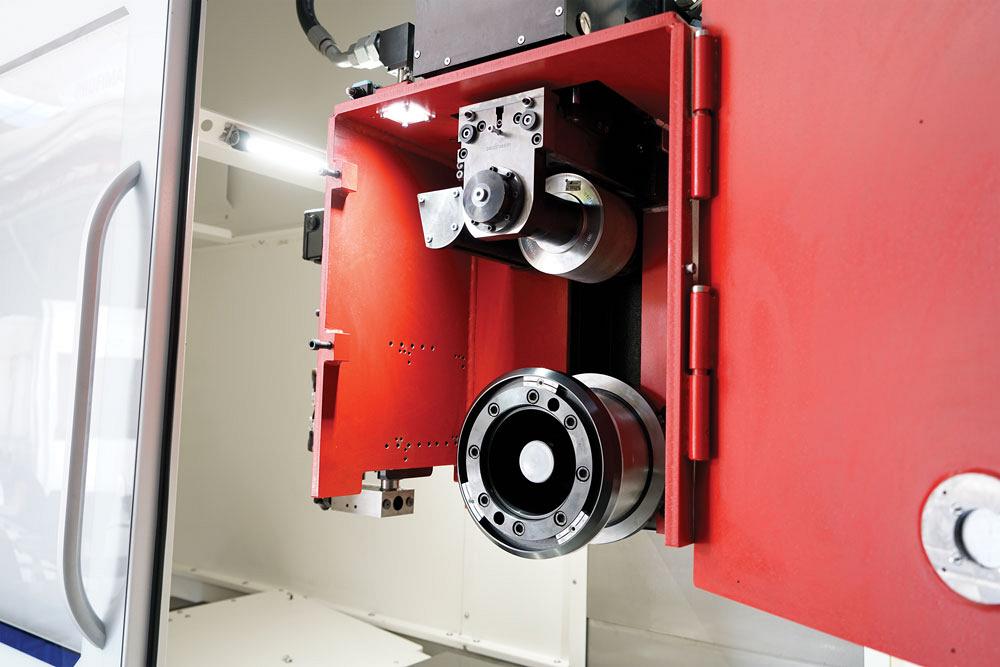
For profile grinding, an overhead dresser can be used for continuous or in-process dressing with no delay to the process. United Grinding
For example, a centreless grinder has several different settings and points. Both the grinding and regulating wheels have dressings, which can be skewed, changing the shape and affecting the grind. Blade height plays a big role, and running the part at centre line or above, if it’s a larger part, is essential.
"Our focus is on decoding the process around centreless grinding to empower our customers to control and understand their manufacturing," said Denny. "Our grinders have the capability to capture process settings and machine performance data and integrate output variables (such as measurements). Increasingly, customers expect and require the ability to capture this data and maintain this level of control over the process."
Some machines come with automatic blade sizing and automatic touch off. Another advancement is an acoustic emission sensor on the blade.
"Acoustic emissions sensors with teach functions and additional frequency bands allow for accurate detection of stock amounts on parts for both ID and OD grinding," said Osborn. "This system reduces the air cutting time and makes the machines more productive. The system now can automatically eliminate natural frequencies in the machine to make the contact detection more accurate. It offers faster searches with more sensitive pickup."
These additional sensors can turn a three- to five-minute manual process into a one-minute automatic process with limited operator intervention. And while this may be a small action in the overall grinding process, using sensors and automating smaller functions can make a big difference.
Measurement Makes for Better Parts
One of the best ways to improve the grinding process is through measurement.
"The laser control is a new and exciting option," said Osborn. "This feature is a flexible measuring system that can ensure part quality is achieved without manual intervention or removing the part from the machine. Traditionally, the manufacturing industry uses in-process gauges to control part sizes on large-batch production runs. This is a very stable and reliable option but takes too long to set up for low-volume, high-mix jobs. Also, a separate gauge head is required for every diameter that needs to be measured. The laser control can measure and control size for these parts on any diameter within its range that traditionally required slow manual measuring processes."
The advantage of using advanced measurement equipment is particularly important as part tolerances become even tighter. And while some shops are still working with a hand micrometer, others may find that investing in advanced measurement technology opens up more options for improvement.
"Within the guidewire process, the P4K measurement tool, which gives the customer the ability to make data driven decisions, is critical to the success." said Denny. "For customers looking to analyze, measure, and control process capability, automation and feedback allow them to check the setup against the form, measuring data across the entire range of the part at once. Traditional measurement technique may not offer the same resolution as the P4K."
The appropriate measurement tools will allow shops to take on more complex forms. And process improvement is especially important in these applications as there tends to be significantly more grinding time put into the part. Measurement is one way to help shops produce better parts and improve grinding processes.
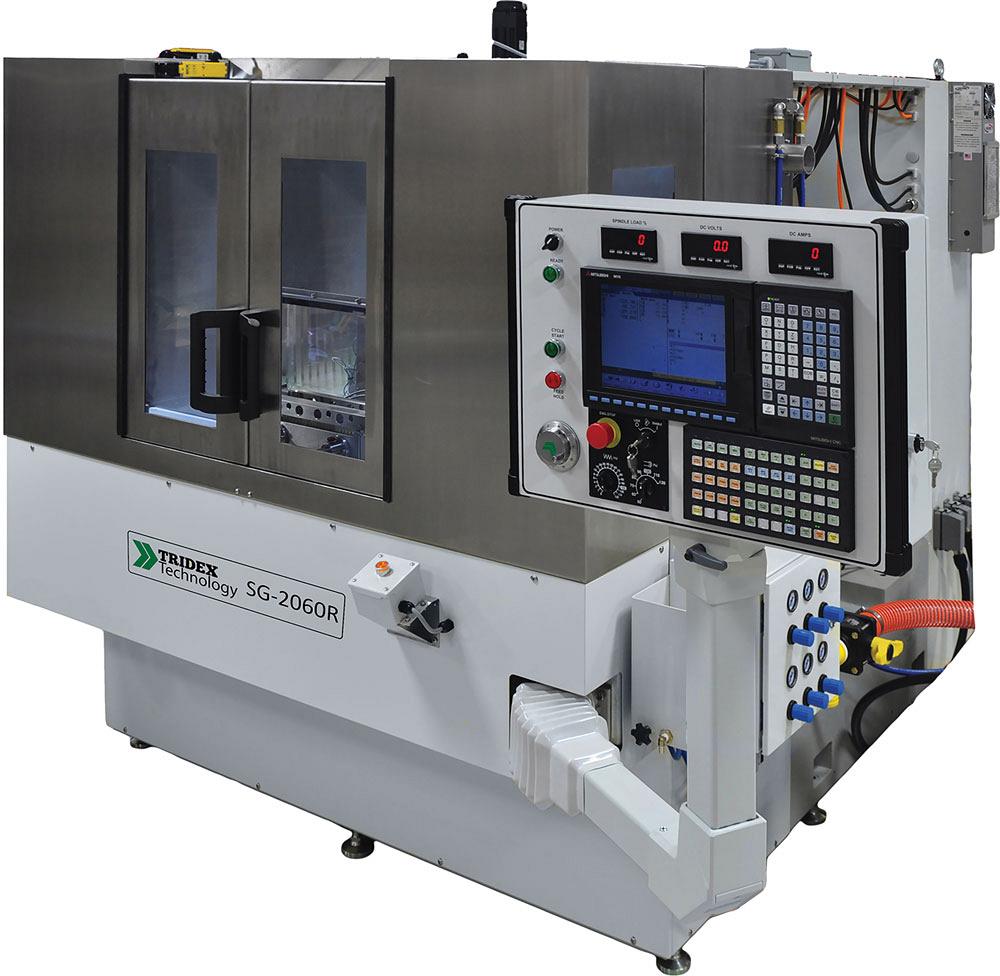
Grinding often requires a lot of skill and tribal knowledge. With long-time grinding experts retiring and a skilled workforce shortage, grinding machines with intuitive interfaces and integrating automation can help solve this challenge. Glebar
Associate Editor Lindsay Luminoso can be reached at lluminoso@canadianmetalworking.com.
Glebar, www.glebar.com
United Grinding, www.grinding.com
About the Author

Lindsay Luminoso
1154 Warden Avenue
Toronto, M1R 0A1 Canada
Lindsay Luminoso, associate editor, contributes to both Canadian Metalworking and Canadian Fabricating & Welding. She worked as an associate editor/web editor, at Canadian Metalworking from 2014-2016 and was most recently an associate editor at Design Engineering.
Luminoso has a bachelor of arts from Carleton University, a bachelor of education from Ottawa University, and a graduate certificate in book, magazine, and digital publishing from Centennial College.
subscribe now


Keep up to date with the latest news, events, and technology for all things metal from our pair of monthly magazines written specifically for Canadian manufacturers!
Start Your Free Subscription- Industry Events
ZEISS Quality Innovation Days 2024
- April 15 - 19, 2024
Tube 2024
- April 15 - 19, 2024
- Düsseldorf, Germany
CTMA Economic Uncertainty: Helping You Navigate Windsor Seminar
- April 30, 2024
- Windsor, ON Canada
MME Winnipeg
- April 30, 2024
- Winnipeg, ON Canada
CTMA Economic Uncertainty: Helping You Navigate Kitchener Seminar
- May 2, 2024
- Kitchener, ON Canada













